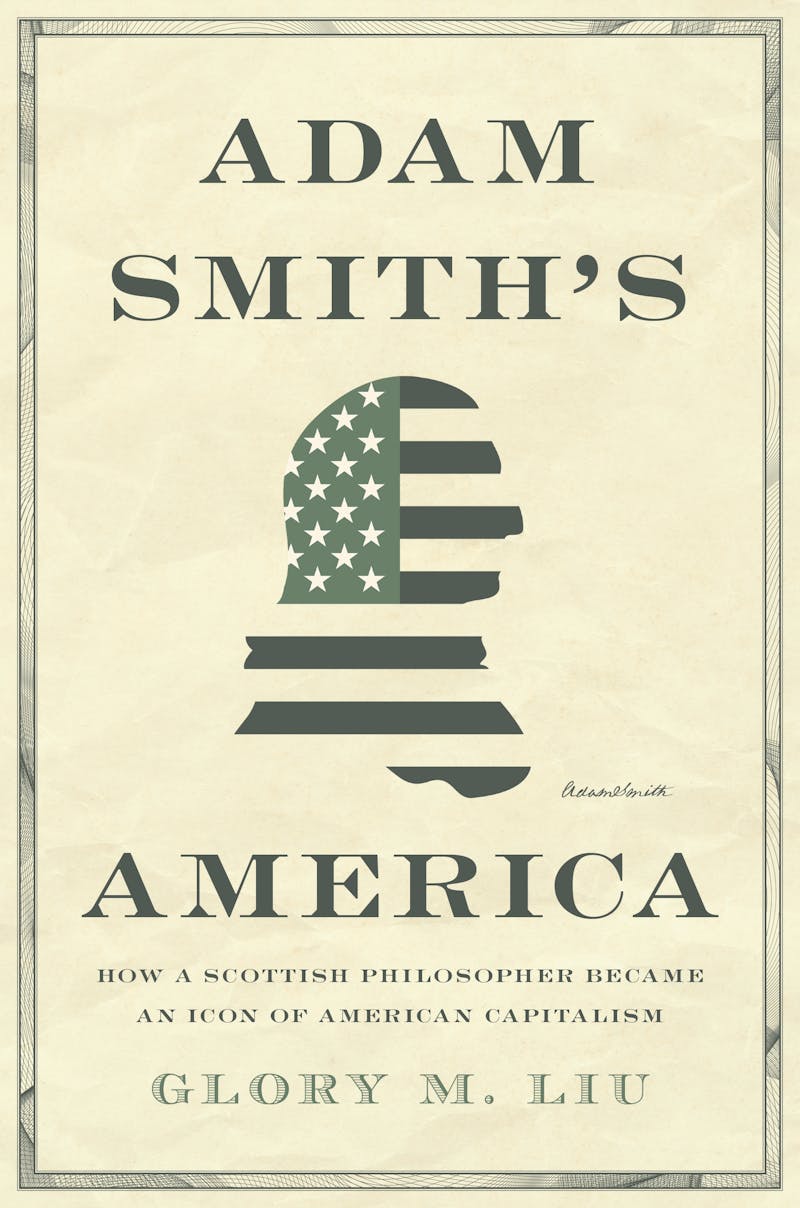More than 245 years ago, an unassuming Scottish tutor to a young British duke published a sprawling manuscript about how, when, and why nations become materially prosperous. At first glance, An Inquiry Into the Nature and Causes of the Wealth of Nations might not have seemed likely to become an intellectual landmark. To call it wide-ranging is an understatement; the opposite of a tightly focused, logical argument, its five volumes and 1,000-plus pages range over everything from the problems with apprenticeship to the origins of money to the “discouragement of agriculture in the ancient state of Europe after the fall of the Roman Empire.”
Adam Smith, its author, looked skeptically at the mercantile policies of the European crowns, with their focus on accumulating silver and gold. But he also viewed the rising merchant class as suspect, not believing its unctuous claims to act in the public good. The Wealth of Nations is replete with contradictory ideas; in this, the book is a bit like the social and economic order that it would help shepherd into being.
But by the late twentieth century, Smith’s ideas would become fully adopted by the right—especially by libertarians and free-market conservatives. The full complexity of his thinking was reduced to the catchphrase “the invisible hand,” even though (as intellectual historian Emma Rothschild has noted) the words appeared just a few times in his entire corpus of work, and only once in The Wealth of Nations. Thanks to Milton Friedman—who enjoyed sporting a necktie emblazoned with cameo portraits of Smith—Smith’s ideas became synonymous with free-market capitalism, even though, as many Smith scholars have observed, the thinker himself was much more ambivalent toward laissez-faire than Friedman would suggest.

How did this happen? How did Smith’s ideas become so thoroughly integrated into conservative defenses of the free market against regulation? And are these the only ways of reading his work? These are the questions at the heart of Adam Smith’s America, Glory M. Liu’s intriguing account of Smith’s reception in the United States. Her capacious monograph demonstrates the variety of uses to which Smith’s work has been put since its publication in the late eighteenth century, showing how politically contested readings of Smith always have been. In so doing, she illustrates a broader point still: The vision of the free market that emerged in the late twentieth century is itself highly specific to our historical moment—it was not the way that people (even economists) thought about economic life before and likely not the only way they will conceive of it in the future.
The Wealth of Nations was published in 1776, the same year the Colonies declared their independence, and many of those who sought to break from Britain were familiar with Smith’s work—both Wealth and his earlier writing. As Liu shows, the first thinkers to make use of Smith in America were more inclined toward his musings about politics and psychology than any of his economic prescriptions. Nor did they interpret Smith in a way that narrowly aligned him with a particular political perspective.
John Adams, most notably, drew on Smith to meditate on the political power of the rich. In an argument that echoes Smith’s in The Theory of Moral Sentiments (his first major book), Adams suggested that there was a deep tendency in human psychology to defer to the wealthy and powerful and to treat them with an esteem that was unseemly for democratic citizens. Smith had warned that the poor man was “ashamed of his poverty,” while the rich man gloried in the “attention of the world” that his wealth conferred. This genuflection, Adams insisted, was still present in the new republic. Wealth had a way (as Liu puts it) of transmuting itself into power even in a constitutional order that lacked an aristocracy.
As the nineteenth century got underway, more people emphasized Smith’s economic thought. This made sense for a new nation: One of the underlying implications of The Wealth of Nations was that countries were not rich or poor simply out of geographic luck, climate and resources, or divine reward; rather, how wealthy a nation was depended upon how it organized labor—on human will, ingenuity, and effort. But how to find the best arrangement to achieve this? Smith’s ideas became heavily politicized in the contest between the slave South and the industrializing North. Although Smith had denounced the “brutality” of slavery, the planters of the South embraced him as the “apostle of free trade,” who supported the low tariffs that made it easier to sell their agricultural products—while the new industrialists of the North sought protection to support their infant industries and accordingly were more skeptical of Smith.
After the war, Adam Smith’s name became a political shorthand, as though his work was (as one historian has put it) a “giant machine assembled to drive home one easily understood point”: the need to end tariffs and expand commercial freedom. Later in the nineteenth century, Smith’s thought became a tool to critique dominant economic policy in the era of high tariffs and imperialist occupation leading to the Spanish-American War. “In our legislation upon commercial matters, we have violated almost every precept that Adam Smith laid down for the guidance of men and nations,” editorialized the New York Evening Post, following a celebration of the centenary of The Wealth of Nations.
But the scripting of Smith into political debates about the merits of trade policy did not lead to lasting consensus about his significance. Reformist economists at the turn of the century looked at Smith and saw someone far more complex. Drawing from German historical economists, they turned American attention to what is known as “Das Adam Smith Problem.” In his early work, Smith had written that “sympathy”—or the ability to identify with the pain and joy of others—was among the “original passions of human nature,” and that “the greatest ruffian, the most hardened violator of the laws of society, is not altogether without it.” How could this be congruent with his argument in Wealth that “self-love”—the “propensity to truck, barter and exchange one thing for another”—was what set humanity apart from other animals? As Smith put it, “Nobody ever saw a dog make a fair and deliberate exchange of one bone for another with another dog.” Self-interest was the defining principle of human nature, and the source for the immense division of labor that produced “general opulence” without anyone quite planning that it would do so. But how to reconcile self-interest with sympathy?
For the economic thinkers of the early twentieth century, writing at a time of brutal and intense labor conflicts, what mattered was simply that Smith seemed to see both sides of the problem, and so he could offer a nuanced way of viewing economic issues that were frequently treated in starkly opposing terms. Indeed, Liu suggests that even the first generation of “Chicago School” economists—thinkers such as Jacob Viner and Frank Knight, who wrote in the 1920s and 1930s—appreciated Smith’s complexity. Knight and Viner turned to Smith as they sought ways to restore confidence in the free market and the price mechanism in response to the Great Depression. As Viner wrote in his essay “ADAM SMITH AND LAISSEZ FAIRE,” Smith saw a “wide and elastic range of activity for government,” believing that “self-interest and competition were sometimes treacherous to the public interest they were supposed to serve”—and that at times collective action might be in the interest of the social good.
These readings of Smith, though, disappeared with the emergence of the postwar Chicago School of Economics, led by Milton Friedman, Friedrich von Hayek, and George Stigler. These thinkers sought to establish economics as a science, saying that the hallmark of economic theory was building models and testing them with evidence to determine their predictive capacity. This had not been Smith’s project, but they were drawn to Smith for his commitment to the idea of individual self-interest as the principle that underwrote the entire theory of the price mechanism. For them, as Stigler wrote, The Wealth of Nations was “a stupendous palace erected upon the granite of self-interest.”
But the Chicago School thinkers produced, Liu argues, a radically simplified version of Smith. Milton Friedman focused relentlessly on the image of the “invisible hand,” making the individualism and anti-statism it implied the cornerstone of his own philosophy. Friedman was wonder-struck by the vision of an economy that would regulate itself with no coordination from above, its constituent parts harmonizing with no external conductor. This was at once a vision of social harmony and a view that justified a profound skepticism of authority. Friedman embraced Smith as a “radical and revolutionary in his time—just as those of us who preach laissez faire are in our time.” For Friedman, Liu writes, Smith was an avatar and symbol of “self-interest, choice and freedom.”
There was something kitschy about the right-wing appropriation of Smith, as the jowly profile of the eighteenth-century economist became a logo for the movement. Conservative activists printed Adam Smith neckties, while Stigler donned a homemade T-shirt: ADAM SMITH’S BEST FRIEND. The free-market organization Mont Pelerin Society traveled to Smith’s birthplace in Kirkcaldy while in Scotland for its 1976 meeting, and conservatives named new think tanks for their icon, such as London’s Adam Smith Institute. For the bicentennial of The Wealth of Nations, the Graduate Economics Association of M.I.T. held a roast at which they gave an “Invisible Hand Award” and sang a hymn celebrating Smith to the tune of “Rock of Ages”:
Hand invisible whose love
We believe that we can prove!
… Save us all from Marxist sins.
Keep us gaily making pins!
But despite the confidence of the Chicago School, it has not had the last word on Smith. Just as the absolute vision of market primacy that it championed has come under increasing pressure in recent years, so, too, has its interpretation of Smith, assailed from both right and left. The last chapter of Adam Smith’s America explores a variety of recent scholarly and political challenges to the Chicago School reading of Smith. Neoconservatives Irving Kristol and Gertrude Himmelfarb, for example, argued in the late 1970s and early ’80s that it was reductive to emphasize Smith’s ideas of self-interest to the exclusion of everything else; read properly, Smith believed that market society had to rely upon bourgeois norms and sensibilities—a moral framework that the “self-centered hedonism” of capitalism undermined.
Meanwhile, economic historian A.O. Hirschman argued that Smith’s vision of self-interest was of a modified, humble, gentle passion, one that required taking into account the perceptions and reality of others and was starkly opposed to naked greed or visions of domination—indeed, Hirschman suggested that Smith was among a generation of thinkers who thought the mild emotion of commercial self-interest could counter the more destructive ambitions of imperial acquisition.
On the left, intellectual historians such as Emma Rothschild have demolished the idea that Smith would ever have thought of the “invisible hand” absolutely dictating social life in the way that the price theorists indicate. Smith was first and foremost an Enlightenment thinker who sought to empower humanity to reshape and reimagine the world. The utopian rigor of market thought would have cut against his entire method and approach to social and economic life—especially his democratic sensibilities, his feeling that there was no single order that could be imposed on all of society.
Liu’s book is fascinating, and persuasive, but she warns readers at the outset that her account is not comprehensive. Her aim has not been to capture every single mention of Smith in the centuries since he wrote, but rather to look at the development of influential schools of thought on Smith and the varying political uses to which his work has been put. Adam Smith’s America is a meditation on the nature of intellectual history: Do ideas reside in the original books, in the intent of authors? Or is what really matters how ideas have been used and reused, how thinkers come to the same texts with new questions that grow out of their own historical contexts?
Yet because Liu’s book is about how people have understood Smith—not Smith himself—readers who have not had the pleasure of reading Smith may find themselves a bit adrift. Liu demonstrates abundantly that the Chicago School reading of Smith dominated only briefly, and that Smith scholarship has to a great extent already left it behind. But it’s necessary to look at Smith’s central themes directly, not just at the debates around them, in order to grasp just how reductive the free-market capture of Smith was.
Smith had a deep and abiding dislike for nobility, aristocracy, and the leisured rich. In his view, these groups influenced state policy in ways that betrayed the larger interest. As historian Robert Heilbroner has proposed, material productivity was important to Smith because it could occasion “that universal opulence which extends itself to the lowest ranks of the people.” For Smith, the “butcher, the brewer” and “the baker” were the people who mattered. In the first chapter of The Wealth of Nations, Smith celebrated the globe-spanning coordination that goes into making a woolen coat. “The shepherd, the sorter of the wool, the wool-comber or carder, the dyer, the scribbler, the spinner, the weaver, the fuller, the dresser … must all join their different arts to complete even this homely production”—not to mention the merchants and carriers, the “ship-builders, sailors, sail-makers, rope-makers” who bring the ingredients of the dyes from “the remotest corners of the world,” the makers of the spinning wheels and looms and even the humble shears to cut the wool from the sheep! All this glorious work and human effort went into making no luxury item, no royal robe, but the “coarse and rough” garments worn by a simple laborer.
As this might suggest, Smith’s impulses were egalitarian. The difference between “a philosopher and a common street porter” arose from “habit, custom and education” more than nature. In the first years of life, children were roughly all the same, and “neither their parents nor playfellows” could see much difference. He was also profoundly skeptical of elite actors, especially those who claimed to be doing things for the public good. Employers, he warned, were always in a “tacit, but uniform and constant, combination” to lower the price of labor; masters and merchants frequently sought to defraud the public to make a quick profit for themselves.
Perhaps most surprising is that Smith was deeply concerned about the implications of the very division of labor that he championed. Early in The Wealth of Nations, he described a pin factory. One person straightens the wire, another draws it out, someone else cuts it, yet another molds the head, and a different worker attaches it. In this way, they could produce tens of thousands of pins in a single day, whereas a single worker doing all the steps alone could only make a few dozen. For Smith, the efficiency of specialization—both within a single factory, and on the order of the society as a whole—was at the bedrock of the new social order; it was what led to the expansion of material wealth. But at the end of Wealth, Smith launches an attack on the very division of labor that he previously championed. It turns out that breaking down the task of pin-making into its constituent parts winds up creating a working life that is intolerable. “The man whose whole life is spent in performing a few simple operations … becomes as stupid and ignorant as it is possible for a human creature to become,” he warns, insisting that such is the “torpor of his mind” that he can no longer engage in rational conversation, let alone come to any just judgment about even personal matters. In the “barbarous societies,” by contrast, “invention is kept alive, and the mind is not suffered to fall into that drowsy stupidity” that Smith thought characterized the common people of his own day.
Smith raises these points—which invert almost perfectly the beginning of the book—as he calls for “government” to do something to stop this course of events, by making education available to all. He ups the ante to appeal to conservatives interested in preserving social stability as he suggests that, without general education, the nation will eventually no longer be able to produce people who are fit for the military, implying that the restive, stupid masses may be unusually susceptible to political manipulation and even rebellion. However, it’s hard to read this passage without wondering: Is education adequate? Will literate pinmakers be content screwing on the heads? Can public education really redress the numb emptiness instilled by the division of labor? How can the problems Smith describes really be resolved?
Smith felt no obligation to answer these questions, or to present a seamless and consistent account of the new economic sensibility he described. He was content to note the contradictions and allow them to exist. This has, of course, allowed generations of thinkers to read and use Smith in their own ways, to seek what they want to in his work, to emphasize some parts and downplay others. Reading Smith against the grain of the conventional wisdom is exciting precisely because he has been so thoroughly claimed by the right. But at the same time, he can’t simply be adopted by the left. In numerous ways, Smith seems to embody many of the tensions within capitalism itself—its roots in rebellion, its obsession with social order and property, its simultaneous extension of freedom and of suppression. He observed and documented the spirit of a new world that was coming into existence. As Liu’s rich account demonstrates, we cannot know what he would have made of that new order once it had ossified, as it has today.






